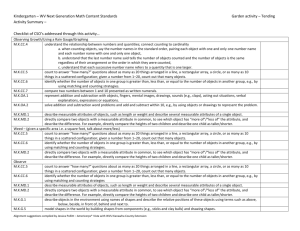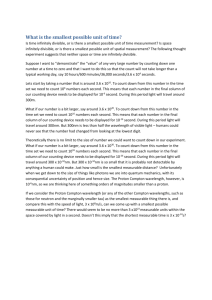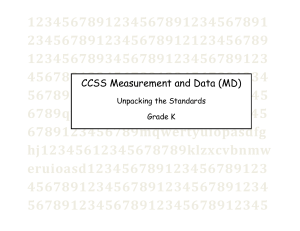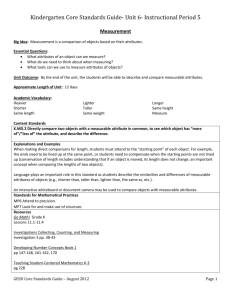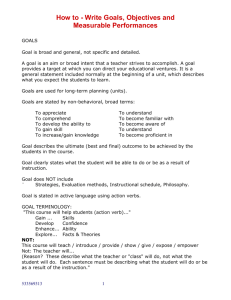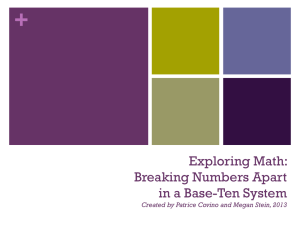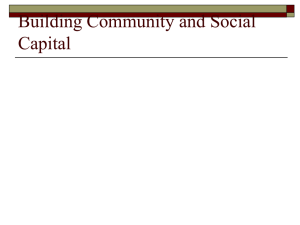Kindergarten Math 2nd grading period
advertisement
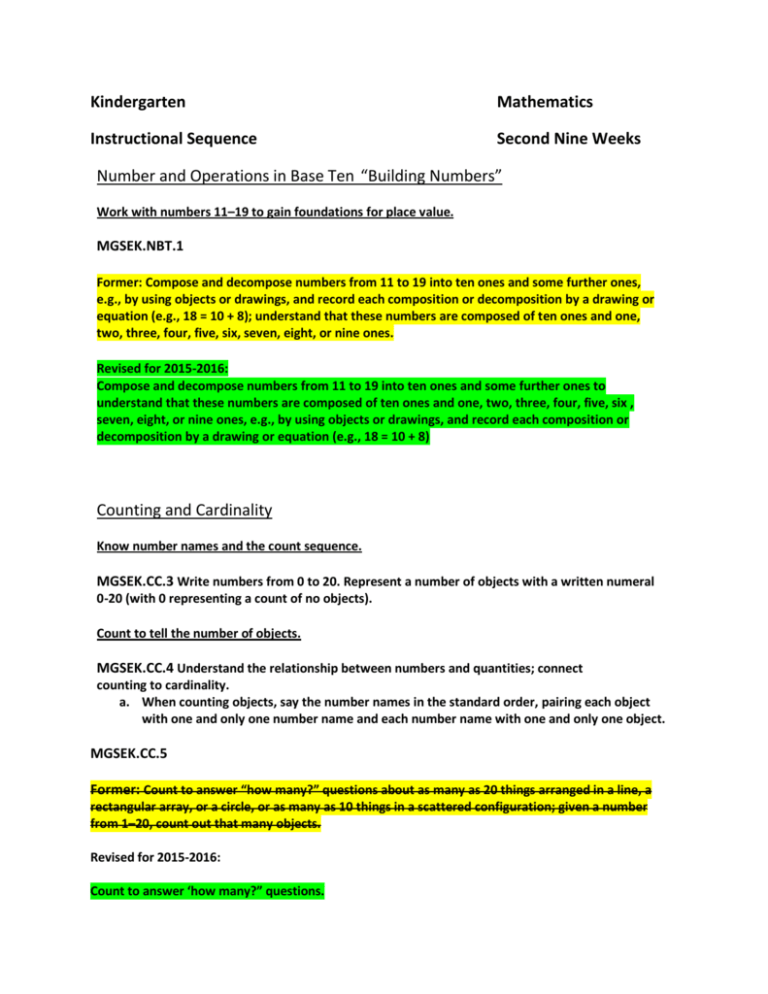
Kindergarten Mathematics Instructional Sequence Second Nine Weeks Number and Operations in Base Ten “Building Numbers” Work with numbers 11–19 to gain foundations for place value. MGSEK.NBT.1 Former: Compose and decompose numbers from 11 to 19 into ten ones and some further ones, e.g., by using objects or drawings, and record each composition or decomposition by a drawing or equation (e.g., 18 = 10 + 8); understand that these numbers are composed of ten ones and one, two, three, four, five, six, seven, eight, or nine ones. Revised for 2015-2016: Compose and decompose numbers from 11 to 19 into ten ones and some further ones to understand that these numbers are composed of ten ones and one, two, three, four, five, six , seven, eight, or nine ones, e.g., by using objects or drawings, and record each composition or decomposition by a drawing or equation (e.g., 18 = 10 + 8) Counting and Cardinality Know number names and the count sequence. MGSEK.CC.3 Write numbers from 0 to 20. Represent a number of objects with a written numeral 0-20 (with 0 representing a count of no objects). Count to tell the number of objects. MGSEK.CC.4 Understand the relationship between numbers and quantities; connect counting to cardinality. a. When counting objects, say the number names in the standard order, pairing each object with one and only one number name and each number name with one and only one object. MGSEK.CC.5 Former: Count to answer “how many?” questions about as many as 20 things arranged in a line, a rectangular array, or a circle, or as many as 10 things in a scattered configuration; given a number from 1–20, count out that many objects. Revised for 2015-2016: Count to answer ‘how many?” questions. a. Count to answer “how many?” questions about as many as 20 things arranged in a variety of ways (a line, a rectangular array, or a circle), or as many as 10 things in a scattered configuration. b. Given a number from 1-20, count out that many objects. c. Identify and be able to count pennies within 20. (Use pennies as manipulatives in multiple mathematical contexts.) Compare numbers. MGSEK.CC.6 Identify whether the number of objects in one group is greater than, less than, or equal to the number of objects in another group, e.g., by using matching and counting strategies. MGSEK.CC.7 Compare two numbers between 1 and 10 presented as written numerals. Measurement and Data “Measuring and Analyzing Data” Classify objects and count the number of objects in each category. MGSEK.MD.3 Classify objects into given categories; count the numbers of objects in each category and sort the categories by count. Measurement and Data Describe and compare measurable attributes. MGSEK.MD.1 Former: Describe measurable attributes of objects, such as length or weight. Describe several measurable attributes of a single object. Revised for 2015-2016: Describe several measurable attributes of an object, such as length or weight. For example, a student may describe a shoe as, “This shoe is heavy! It is also really long!” MGSEK.MD.2 Directly compare two objects with a measurable attribute in common, to see which object has “more of”/“less of” the attribute, and describe the difference. For example, directly compare the heights of two children and describe one child as taller/shorter.
